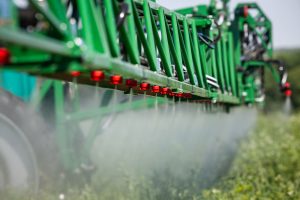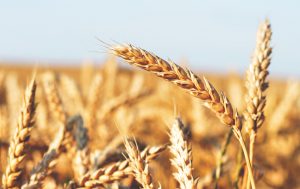I’ve already written about the beginnings of the Green Revolution and some of its accomplishments. The wheat varieties developed by Norman Borlaug and his Mexican team swept over Asia in the 1960s, making Pakistan and India self-sufficient in wheat by the end of the decade. He was a hero to farmers in those and other countries, and his accomplishments gained worldwide attention. The Nobel Committee in Oslo awarded him the Nobel Peace Prize in 1970, believing his work had not only prevented famine, but also the political unrest that widespread famine can bring.
Borlaug’s work inspired others to duplicate his results with other crops. In 1962, the International Rice Research Institute (IRRI) was built and dedicated on land donated by the University of the Philippines.
Researchers went to work immedicably applying Borlaug’s methods to rice. With some lucky breaks, researchers Peter Jennings and Te-Tzu Chang came up with a dwarf rice with exceptional yield and disease resistance after just three generations of crosses. Dubbed IR8, the plant was multiplied and tested on farms throughout South and East Asia with spectacular results. In some plots, it yielded 10 times more than conventional varieties of the early 1960s.

IR8 was released to the public in 1966. With Borlaug’s wheat and Jennings-Chang rice, famine was erased from Asia, including China. Population numbers increased as predicted in the following decades, but Asians had an average 30 percent more calories in their diet.
There were unintended consequences, however, and critics eagerly attacked. According to author Charles Mann, (The Wizard and the Prophet), “Between 1970 and 1989, more than three hundred academic studies of the Green Revolution appeared. Four out of five were negative.”
There were social costs and environmental costs. Mann enumerates them: “The intensive fertilization mandated by the Green Revolution has heavily contributed to nitrogen problems on land and water. Pesticides have wreaked havoc on agricultural ecosystems and sometimes poisoned sources of drinking water. Poorly constructed and managed irrigation systems have drained aquifers. Soils have become waterlogged or, worse, loaded with salts when water evaporated.”
These problems are not problems of the Green Revolution, per se. They are soil and water management problems. Farmers need to be educated on how to match fertilizer and water needs with expected yields.

The social problems were mostly of political origin. Many small subsistence farmers in India were unable or unwilling to finance inputs to get the high yields the new varieties were capable of. Thousands lost their farms and moved to the cities. Some large landholders who had many tenants fired the tenants and took over the farming in order capture more of the profits.
These results were unfortunate, but again, not the direct fault of the Green Revolution.
It was a failure of government support and regulation. In places where inputs were more sensitively administered, these adverse results were avoided. Mann relates results found by himself and a couple of journalists who visited with small farmers years after the introduction of Borlaug’s varieties.
Farmers in the Punjab told journalist Joel Bourne, “There was nothing like it in their lifetimes. The first season they grew so much wheat they had no place to store it all. They closed up the schools and filled them full of grain.”
Reporter Harish Damodaran interviewed old farmers near Delhi in 2016 who told them their harvests tripled. “It was a miracle. … It totally changed our lives.”
Mann visited farmers in the state of Maharashtra in 1980 who were not wealthy, but one farmer told him “with quiet pride that he and all his brothers now had bicycles.”

One valid criticism of the Green Revolution is that the introduction of high yielding wheat varieties pushed pulse production to marginal lands, and pulses are an important protein source. However, India is still the world’s largest producer of pulses (25 percent) and also the largest consumer (27 percent), so imports are a necessity.
Environmentalists cite these facts and call for a return to low-input farming to employ peasants and “save” the soil. (Before the Green Revolution, Indian famers often intercropped pulses with wheat as a nitrogen supply.) These critics are people who have never been hungry (except on purpose) and have never personally experienced the drudgery and hopelessness of subsistence farming, or learned the real basis of productive soils. (More on that in future articles.) For a society to prosper, farmers must produce a surplus to feed non-farmers. An American farmer produces for 166 people.
A research paper in the Journal of Political Economy, titled Two blades of Grass: The Impact of the Green Revolution, said, “We find that HYVs (high yield varieties) increased yields by 44 percent between 1965 and 2010, with further gains coming from reallocation of inputs. Higher yields increased income and reduced population growth. A 10-year delay of the Green Revolution would in 2010 have cost 17 percent of GDP (gross domestic product) per capita and added 223 million people to the developing-world population.”
In conclusion, I quote again from Charles Mann: “Even though the continent’s population soared, Asians had an average 30 percent more calories in their diet. Millions upon millions of families had more food, better clothing, money for school. Seoul and Shanghai, Jaipur and Jakarta: shining skyscrapers, pricy hotels, traffic-choked streets ablaze with neon — all built atop a foundation of laboratory-bred rice” (and wheat.)
Jack DeWitt is a farmer-agronomist with farming experience that spans the decades since the end of horse farming to the age of GPS and precision farming. He recounts all and predicts how we can have a future world with abundant food in his book “World Food Unlimited.” A version of this article was republished from Agri-Times Northwest with permission.



